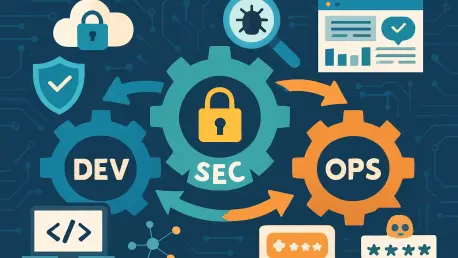In an era where cyberthreats evolve at an unrelenting pace, businesses face mounting pressure to safeguard their digital assets while maintaining the speed of software development, a challenge that often pits security against agility in high-stakes environments. For B2B organizations, where data breaches can result in significant financial loss and reputational damage, integrating security into the development lifecycle is no longer optional but a strategic imperative. The rise of DevSecOps—a methodology that embeds security practices into the DevOps framework—offers a promising solution to this tension, ensuring that protection is not an afterthought but a core component of innovation.
This article explores how adopting DevSecOps best practices can significantly enhance organizational security by aligning development, operations, and security teams under a unified approach. It delves into actionable strategies that address common vulnerabilities, streamline workflows, and foster a culture of shared responsibility. By focusing on the business outcomes of reduced risk exposure and improved compliance, the discussion aims to equip decision-makers with insights to transform security from a bottleneck into a competitive advantage. Understanding these principles matters now more than ever, as the cost of cyber incidents continues to escalate, with studies indicating that the average data breach in 2023 cost businesses over $4 million. The path forward lies in proactive integration, and this piece offers a roadmap for achieving it.
Building a Resilient Security Framework with DevSecOps
The foundation of a robust security posture begins with embedding protective measures early in the software development lifecycle, a concept often referred to as “shifting left.” By prioritizing security from the initial stages—such as during requirements gathering and design—organizations can identify and mitigate risks before they manifest in production environments. This proactive stance not only reduces the likelihood of costly rework but also aligns with business goals of delivering secure, reliable applications to clients and partners.
A critical element in this approach is maintaining a comprehensive inventory of digital assets, including applications, APIs, and cloud resources. Without visibility into the full scope of an organization’s attack surface, blind spots emerge, leaving exploitable gaps. Automated discovery tools can continuously map these assets, ensuring that security teams prioritize efforts based on data sensitivity and business criticality. For instance, a financial services firm that catalogs its customer-facing applications can focus resources on protecting high-value systems, directly impacting risk reduction.
Another cornerstone is setting clear, measurable security objectives that align with organizational risk tolerance. Defining specific targets, such as reducing critical vulnerabilities by a set percentage within a defined timeframe, provides direction and accountability. This clarity prevents scope creep and justifies investment to stakeholders, demonstrating tangible value. When paired with threat modeling—conducted early and iteratively—businesses gain foresight into potential weaknesses, enabling informed decisions that safeguard long-term operational integrity.
Conclusion
Looking ahead, the adoption of DevSecOps best practices stands as a transformative strategy for B2B organizations aiming to fortify their security amid escalating cyber risks. By embedding protective measures into every phase of development, businesses can achieve a balance between speed and safety, ultimately enhancing trust with clients and partners. The journey requires commitment to cultural change and strategic alignment, but the payoff in reduced vulnerabilities and compliance readiness is undeniable. As threats continue to evolve, embracing this integrated approach positions companies to not only react but anticipate, ensuring resilience in a digital landscape.









